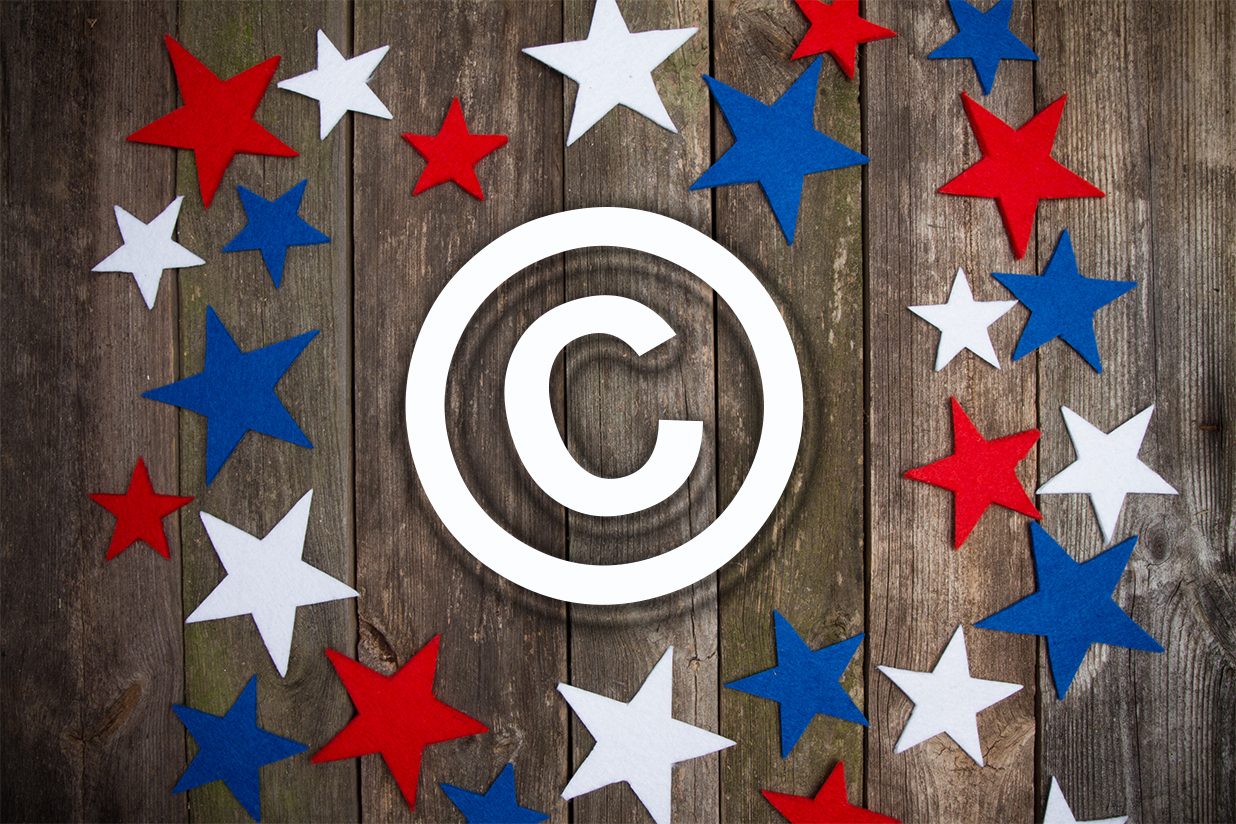Celebrating President’s Day: A Presidential History of Copyright

President’s Day, besides marking a weekend of sales at department stores and car dealerships, commemorates George Washington’s birthday. Though many know Washington as the first President of the United States and one of the Founding Fathers, few people know that he also signed into law the first federal Copyright Act in 1790. Here are a couple Presidents who were involved in the development of federal copyright law, that lead us to the version we have today.
President George Washington: Copyright Act of 1790
Previous to the first Copyright Act, states had passed their own copyright laws (except Delaware), but the Constitution provided Congress with the authority to pass copyright legislation in Article I, Section 8, Clause 8 . The Copyright Act of 1790 was Congress’ first attempt in wielding the power to promote the progress of the sciences. It provided protection for maps, charts, and books for a period of 14 years with a renewal term of an additional 14 years. The types of rights granted were limited, only covering “printing, reprinting, publishing, and vending.” Authors were required to send a copy of their work to the Secretary of State and register the work with the district court of their residence. Additionally, authors were required to publish a copy of the registration in a newspaper for four weeks. George Washington himself did not comment much on copyright law, other than to encourage Congress in the first State of the Union “that there is nothing which can better deserve your patronage than the promotion of science and literature.” But he left a mark on copyright law, not by choice, when his letters were the focal point of the case Folsom v. Marsh, in which future Supreme Court Justice, Justice Joseph Story, used language that can be traced in the modern day fair use statute and established the beginnings of the fair use doctrine.
President Andrew Jackson: Copyright Act of 1831 & Bonus from President Lincoln!
President Andrew Jackson was next to sign into law, a major overhaul of the Copyright Act on February 3, 1831. The 1831 version extended the copyright term to 28 years while maintaining the renewal term at 14 years and expanded the category of protectable works by adding musical compositions to the list. Renewal rights were also granted to the widows and children of deceased authors.
Fast forward to March 3, 1865, when a major category of copyrightable works was added to the list as a result of the development and innovation of early photographers. Exactly six weeks before his assassination, President Abraham Lincoln signed a bill that allowed copyright protection for photographs and for photographic negatives. To Lincoln, photography was an important tool that launched him into political stardom and he credited portrait photographer Matthew Brady with helping him become President by taking Lincoln’s picture on the day of the Cooper Union speech.
President Theodore Roosevelt: Copyright Act of 1909
It wasn’t until almost 80 years after the Copyright Act of 1831, when the next version of the Copyright Act was signed by President Theodore Roosevelt on March 4, 1909, his last day in office. In his State of the Union address in 1905, Roosevelt urged Congress that U.S. copyright “laws urgently need[ed] revision” since the statute imposed requirements which made it burdensome for creators in getting and protecting their copyrights. He also noted that the U.S. not only needed to bring its copyright law up to speed with the rest of the world but that Congress also needed to rework the statute since reproduction under new technological advances had led to a lack of protection for works that should have been otherwise protectable. The 1909 overhaul of the Copyright Act extended the maximum term of copyright protection to 56 years and established the first compulsory mechanical licensing system. Additionally, copyright was secured from the date of first publication that had a proper notice affixed on the copy of the work.
President Gerald Ford: Copyright Act of 1976
Fast forward to 1976, when President Gerald Ford signed the current Copyright Act into law on October 19. Among other important provisions, copyright protection now applied to both unpublished and published works in tangible forms and works created on or after January 1, 1978 had copyright terms of the life of the author plus 50 years (later extended to life plus 70 years through the Sonny Bono Act). Like President Washington, President Ford didn’t seem to have much to say on copyright, but inadvertently left a mark on copyright law when his biography was the subject of the case Harper Row v. Nation Enterprises, an often cited case in conducting fair use analysis on the third factor concerning the amount and substantiality of the portion of the copyrighted work used.
Current State of Copyright Legislation
It’s been over forty years since the Copyright Act has been comprehensively reformed. President Bill Clinton did sign the Digital Millennium Copyright Act into law on October 28, 1998, marking one of the biggest additions to federal copyright law to reflect the rapid rise of the Internet. Though the DMCA has not been without fault, it was a major step in trying to balance internet innovation with meaningful copyright protection.
Currently, there are some promising, positive changes on the horizon of the copyright legal landscape. The House and the Senate Judiciary Committees have introduced a number of copyright bills including the Register Bill, Small Claims Bill, Music Modernization Act, CLASSICS Act, and the AMP Act. The Copyright Act has come a long way from George Washington’s era, and it’s about time for another update to copyright law to ensure fair compensation and meaningful protection for artists’ rights.
Photo Credit: masharinka/iStock/thinkstock
Photo Edited by: Copyright Alliance

